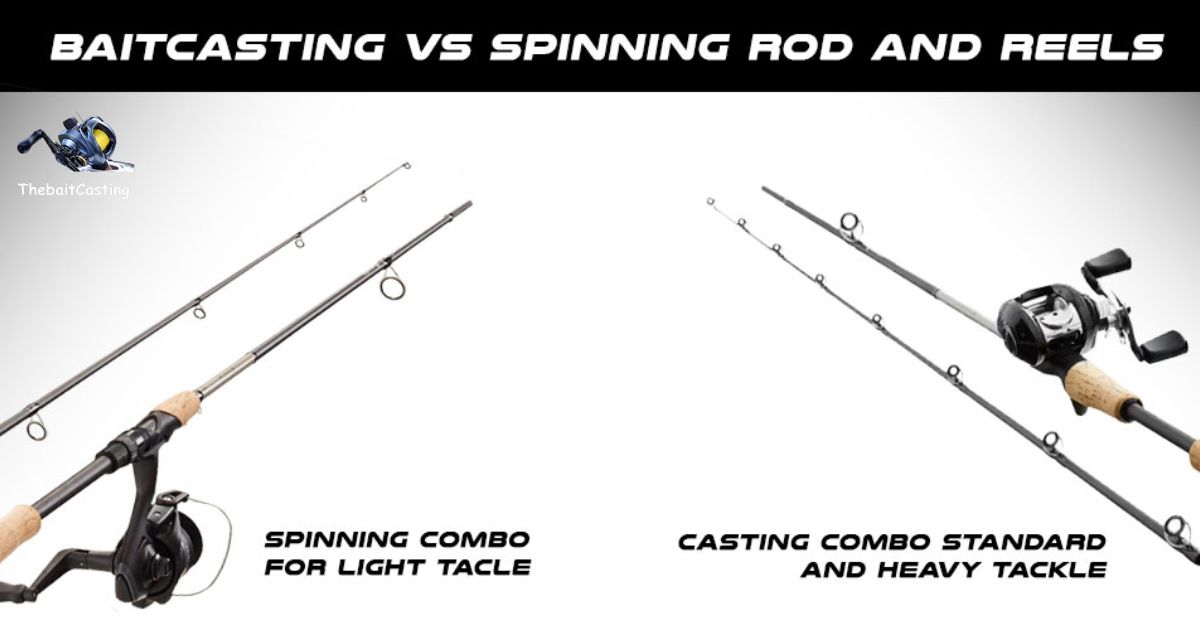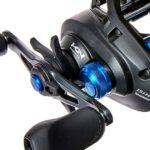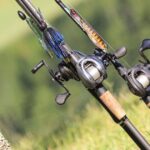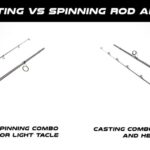When it comes to fishing, the choice between a spinning rod and a casting rod can make a big difference. Both rods have their unique features and are suited for different types of fishing. Understanding the differences can help young anglers choose the right equipment for their next adventure.
Imagine you’re at a serene lake, eager to cast your line. But wait! Which rod should you use? The spinning rod or the casting rod? Your choice could mean the difference between a successful catch and a missed opportunity.
Fishing is not just about patience; it’s also about having the right tools. Spinning rods and casting rods are two primary types of fishing rods, each with its own set of advantages. While both can help you reel in that big fish, they operate differently and are suited for varying fishing techniques. Let’s dive deeper into the world of fishing rods and discover which one might be the best fit for your fishing style.
What Is A Spinning Rod?

A spinning rod is a long, slender tool used for fishing. It’s made to be easy to use, especially for beginners. This rod works with a special kind of reel that hangs down below it. Anglers love it because it’s great for catching all sorts of fish, big and small.
Structure Of A Spinning Rod:
- Rod Blank: Main body of the rod.
- Guides: Rings that help the fishing line move smoothly.
- Reel Seat: Hold the fishing reel in place.
- Handle: Where you hold the rod.
- Reel: Hangs down and helps release and pull in the line.
- Action and Power: Describes how flexible and strong the rod is.
Best For:
- Beginners learning to fish.
- Catching both small and big fish.
- Fishing in various water conditions.
Technique On How To Use A Spinning Rod:
Using a spinning rod is simple. Hold the handle with one hand and the reel with the other. To cast, flip the bail (a small wire arm) open, hold the line with your finger, and swing the rod forward. Release your finger to let the line go. When a fish bites, turn the handle to reel it in.
What Is A Casting Rod?
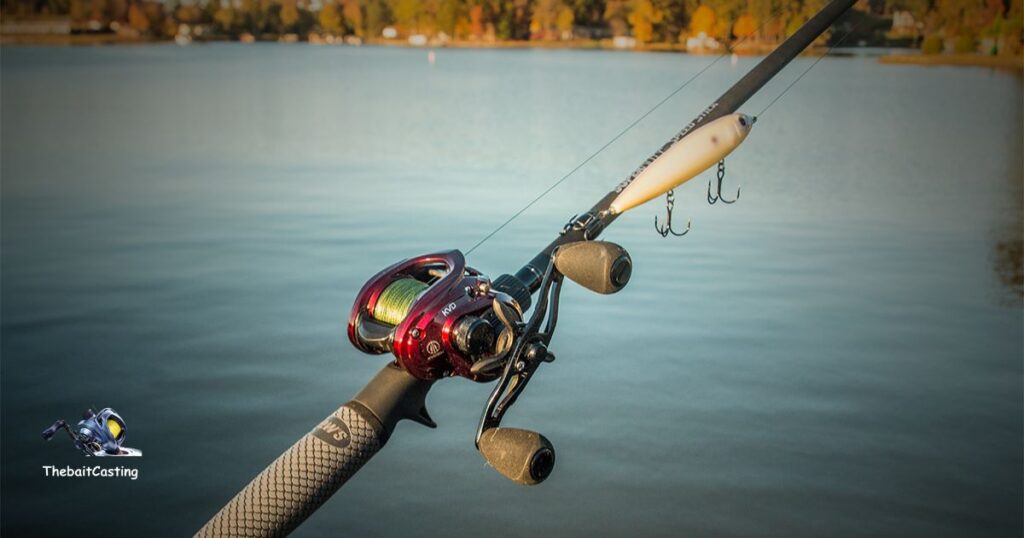
A casting rod is a type of fishing rod designed to work with a specific type of fishing reel called a casting reel. Unlike spinning rods, where the reel hangs beneath, casting rods have the reel sitting atop. They’re often sturdier and provide anglers with more control when targeting larger fish or using heavier lures.
Structure Of A Spinning Rod
- Rod Blank: Main body of the rod, made of materials like graphite or fiberglass.
- Guides: Circular rings guiding the fishing line, usually larger than those on casting rods.
- Reel Seat: Located beneath the rod’s handle, securing the reel.
- Handle: Provides a grip for the angler, typically made of cork or foam.
- Reel: The fishing reel attached to the reel seat, designed for easy casting and retrieval.
Best For:
- Beginners due to its ease of use.
- Lighter lures and lines.
- Fishing scenarios where precision isn’t the primary concern.
Technique On How To Use A Casting Rod:
Using a casting rod involves a slightly different technique than a spinning rod. With the reel atop, the angler uses their thumb to control the line’s release during casting. This technique offers more precision, especially when aiming for specific spots or when dealing with heavier baits.
| Key Features | Spinning Rods | Casting Rods |
| Accuracy and Control | Offer moderate accuracy but are generally easier to control for beginners. | Provide higher accuracy, especially for precise placements. |
| Versatility | More versatile for various fishing conditions and techniques. | Better suited for specific techniques and specialized fishing. |
| Line Management | Tend to offer better line management for lighter lines. | Excel in managing heavier lines and lures. |
Select The Right Rod: Factors To Consider

Selecting between a spinning and casting rod depends on various factors, including personal preference and intended use. Here are some aspects to ponder:
- Experience Level
- Beginners might find spinning rods more forgiving and easier to master.
- Experienced anglers seekins precision might gravitate towards casting rods.
- Type of Fishing
- For finesse fishing and lighter lures, spinning rods often have the edge.
- Casting rods shine in scenarios requiring heavier baits and precise placements.
- Budget Considerations
- Entry-level spinning rods can be more budget-friendly for newcomers.
- High-end casting rods, with their specialized designs, might come at a premium.
Maintenance And Care
Regardless of your choice, proper maintenance ensures longevity and optimal performance. Here are some universal care tips:
- Regular Cleaning: Always rinse your rod after saltwater fishing to prevent corrosion.
- Storage: Store your rod in a cool, dry place away from direct sunlight.
- Regular Checks: Periodically inspect your rod for any signs of wear or damage.
Pros And Cons Of Spinning Rod vs Casting Rod

| Spinning Rod | Casting Rod | |
| Pros | – Easier for beginners | – Offers higher accuracy |
| – Versatile for various fishing conditions | – Better for heavier baits and lures | |
| – Better line management for lighter lines | – Allows for precise placements | |
| Cons | – Moderate accuracy compared to casting rods | – Steeper learning curve for beginners |
| – Less suited for heavy baits | – Less versatile in certain fishing conditions |
FAQ’s
How many rods should a fisherman have?
Always carry at least two rods when fishing. Issues like tangles or big fish mishaps can ruin your trip, so having a backup is essential. Personally, I prefer bringing three rods at most.
Can a casting rod be used with a spinning reel?
Certainly, while it’s possible to use a spinning reel on a conventional rod, it’s not the recommended combination. Conventional rods are tailored for baitcasting or conventional reels, whereas spinning reels are specifically crafted for spinning rods.
Are more expensive fishing rods better?
Decide if saving money is worth potential performance drawbacks. Cheaper rods may lack sensitivity, be heavier, and have lower quality. While pricier rods offer better sensitivity, balance, and overall feel, they come with higher costs and may be less durable.
Why doesn’t my fishing rod cast far?
To achieve the longest casting distance, it’s essential to select the right combination of rod, reel, and line. Each component must harmonize well with the others for optimal performance. If the rod is too light, it may lack the strength needed to cast the bait far.
Which rod gives the highest accuracy for fishing?
Casting rods excel in long, accurate casts with larger baits and heavier lines, but may not perform as well with lighter options. Common lures for casting rods include spinners, wobbling spoons, plugs, and spinnerbaits. For lightweight lures, spinning reels offer the best distance and accuracy.
Final Thoughts
Spinning Rod vs Casting Rod: Choosing between a spinning rod and a casting rod is a decision every angler faces. While both rods have their merits, your choice largely depends on your experience level and the kind of fishing you aim to do. Beginners might find the spinning rod’s simplicity appealing, while those seeking precision and specialized techniques might lean towards the casting rod.
Regardless of your preference, remember that maintaining your rod is crucial. Regular cleaning and storage practices can extend its lifespan, ensuring many successful fishing trips ahead.
